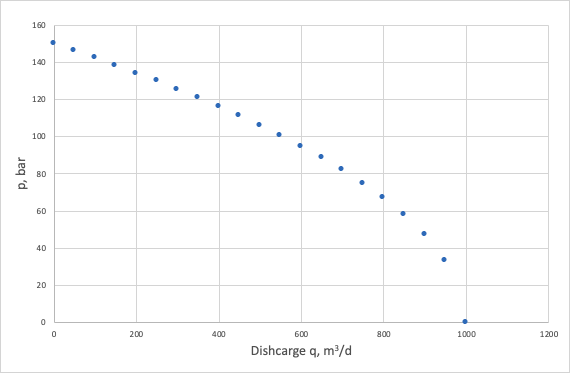The most general Pump model is given as (see Fig. 1):
| LaTeX Math Block |
|---|
|
p_{\rm out}= F(q, p_{\rm in}) |
| Show If |
|---|
|
| Panel |
|---|
|
| Expand |
|---|
|
In many practical cases it simplifies (see Fig. 1) to
In most practical cases it has a linear dependance on incharge pressure
| LaTeX Math Inline |
|---|
| body | --uriencoded--p_%7B\rm in%7D |
|---|
|
: | LaTeX Math Block |
|---|
| 808YK |
p_{\rm out}=p_{\rm in} + ( p_{\rm max} - p_{\rm in}) \cdot F(q/q_{\rm max}) |
where
and .
The pump characteristic curve
can be usually approximated by ...
the following equation:
| LaTeX Math Block |
|---|
| VEVP9 |
F(x)= 1 - (1- x^m)^n , \, m > n |
and usually
and : | LaTeX Math Inline |
|---|
| body | --uriencoded--F(x)= 1- \sqrt%7B1- x%7D |
|---|
|
.
|
| Fig. 1. Pump Characteristic Curve |
...
